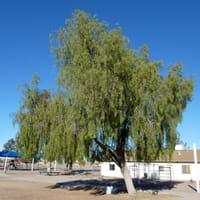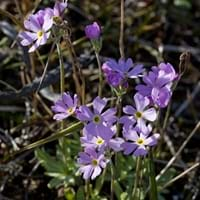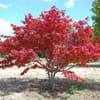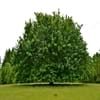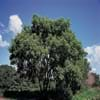Life Span
Perennial
Perennial
Origin
Australia
Northeastern United States, Mid-Atlantic United States, Southeastern United States, North-Central United States, Central United States, South-Central United States
Types
Not Available
Not Available
Habitat
Tropical Forests
Roadsides, sand dunes, Waste areas
USDA Hardiness Zone
10-11
5-8
Sunset Zone
8, 9, 12, 13, 14, 15, 16, 17, 18, 19, 20, 21, 22, 23, 24
1a, 1b, 2a, 2b, 3a, 3b, 4, 5, 6, 7, 8, 9, 10, 11, 12, 13, 14, 15, 16, 17, 18, 19, 20, 21, 22, 23, 24
Habit
Upright/Erect
Clump-Forming
Flower Color
Yellow
White, Ivory
Flower Color Modifier
Bicolor
Bicolor
Leaf Color in Spring
Dark Green
Green
Leaf Color in Summer
Dark Green
Green
Leaf Color in Fall
Dark Green
Green
Leaf Color in Winter
Dark Green
Light Green
Plant Season
Not Available
Summer
Sunlight
Full Sun
Full Sun, Partial Sun
Type of Soil
Clay, Loam, Sand
Loam, Sand
The pH of Soil
Acidic, Neutral
Acidic, Neutral, Alkaline
Soil Drainage
Well drained
Well drained
Bloom Time
Fall, Winter
Early Summer, Summer, Late Summer
Tolerances
Drought
Variety of soil types
Where to Plant?
Ground
Container, Ground, Pot
How to Plant?
Seedlings
Divison, Seedlings, Stem Planting
Plant Maintenance
Medium
Low
Watering Requirements
Average Water Needs
Average Water Needs, Do Not over Water, Never Over-water, Requires regular watering, Water more in summer
In Summer
Lots of watering
Lots of watering
In Spring
Moderate
Moderate
In Winter
Average Water
Average Water
Soil pH
Acidic, Neutral
Acidic, Neutral, Alkaline
Soil Type
Clay, Loam, Sand
Loam, Sand
Soil Drainage Capacity
Well drained
Well drained
Sun Exposure
Full Sun
Full Sun, Partial Sun
Pruning
Remove damaged leaves, Remove dead branches, Remove dead leaves
Remove damaged leaves, Remove dead branches, Remove dead leaves, Remove dead or diseased plant parts
Fertilizers
All-Purpose Liquid Fertilizer
All-Purpose Liquid Fertilizer, fertilize in growing season
Pests and Diseases
Red blotch
Slugs, Snails
Plant Tolerance
Drought
Variety of soil types
Flowers
Insignificant
Yes
Flower Petal Number
Single
Single
Foliage Texture
Fine
Fine
Foliage Sheen
Matte
Matte
Attracts
Butterflies
Insects
Allergy
Not Available
Abdominal pain, Constipation, Diarrhea, Skin irritation
Aesthetic Uses
Showy Purposes
Beautification, Borders, Landscape Designing, Showy Purposes
Beauty Benefits
Not Available
Good for skin, Making cosmetics, Stops hair loss
Environmental Uses
Air purification
Air purification, Food for insects, Versatility
Medicinal Uses
Not Available
Eczema
Part of Plant Used
Flowers, Root, Seeds
Root
Other Uses
Charcoal, Edible yellow dye is obtained, Used As Food
Decoration Purposes, Medicinal oil, Showy Purposes, Used as Ornamental plant, Used for its medicinal properties
Used As Indoor Plant
No
Yes
Used As Outdoor Plant
Yes
Yes
Garden Design
Screening / Wind Break, Shade Trees, Street Trees
Edging, Feature Plant, Groundcover, Mixed Border
Botanical Name
ACACIA salicina
Primula mistassinica
Common Name
Cooba, Willow Acacia
Mistassini primrose, Lake Mistassini primrose, bird's-eye primrose
In Hindi
willow acacia
Mistassini Primrose
In German
Weiden Akazie
Mistassini Primrose
In French
saule acacia
Primrose Mistassini
In Spanish
acacia sauce
Mistassini Primrose
In Greek
ιτιά ακακίας
Mistassini Primrose
In Portuguese
salgueiro de acácia
Mistassini Primrose
In Polish
wierzba akacji
Mistassini Primrose
In Latin
lignis salices
Mistassini Primrose
Phylum
Magnoliophyta
Magnoliophyta
Class
Magnoliopsida
Magnoliopsida
Family
Fabaceae
Onagraceae
Clade
Angiosperms, Eudicots, Rosids
Angiosperms, Eudicots, Rosids
Tribe
Not Available
Onagreae
Subfamily
Not Available
Onagroideae
Number of Species
Not Available
Season and Care of Willow Acacia and Mistassini Primrose
Season and care of Willow Acacia and Mistassini Primrose is important to know. While considering everything about Willow Acacia and Mistassini Primrose Care, growing season is an essential factor. Willow Acacia season is Not Available and Mistassini Primrose season is Not Available. The type of soil for Willow Acacia is Clay, Loam, Sand and for Mistassini Primrose is Loam, Sand while the PH of soil for Willow Acacia is Acidic, Neutral and for Mistassini Primrose is Acidic, Neutral, Alkaline.
Willow Acacia and Mistassini Primrose Physical Information
Willow Acacia and Mistassini Primrose physical information is very important for comparison. Willow Acacia height is 610.00 cm and width 370.00 cm whereas Mistassini Primrose height is 610.00 cm and width 460.00 cm. The color specification of Willow Acacia and Mistassini Primrose are as follows:
Willow Acacia flower color: Yellow
Willow Acacia leaf color: Dark Green
Mistassini Primrose flower color: White and Ivory
- Mistassini Primrose leaf color: Green
Care of Willow Acacia and Mistassini Primrose
Care of Willow Acacia and Mistassini Primrose include pruning, fertilizers, watering etc. Willow Acacia pruning is done Remove damaged leaves, Remove dead branches and Remove dead leaves and Mistassini Primrose pruning is done Remove damaged leaves, Remove dead branches, Remove dead leaves and Remove dead or diseased plant parts. In summer Willow Acacia needs Lots of watering and in winter, it needs Average Water. Whereas, in summer Mistassini Primrose needs Lots of watering and in winter, it needs Average Water.
